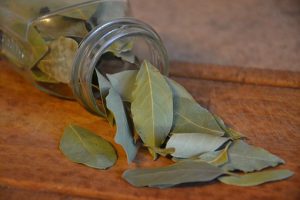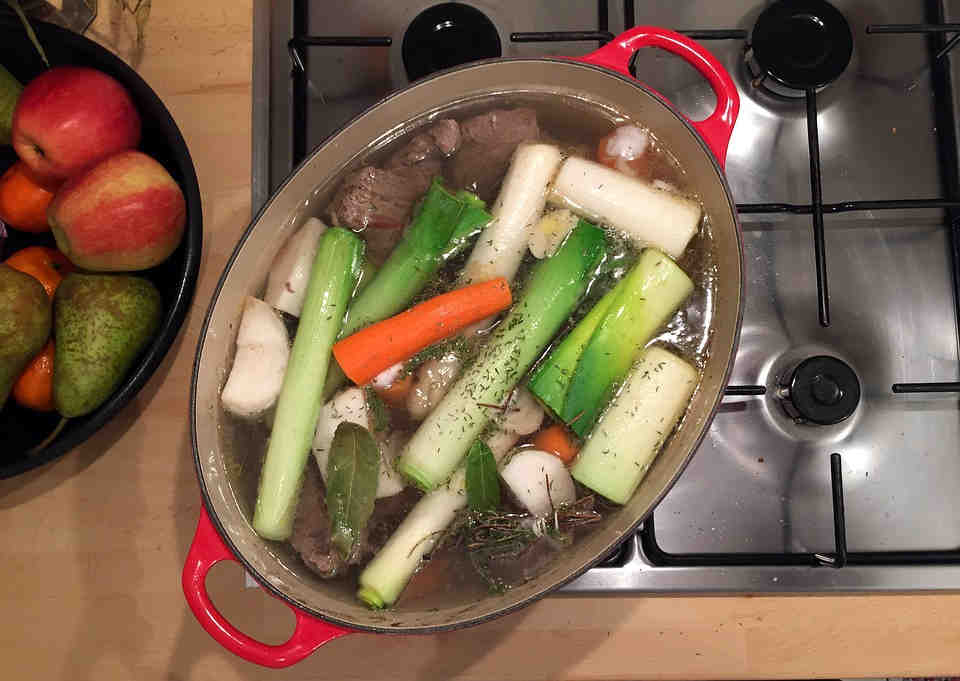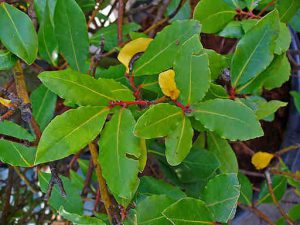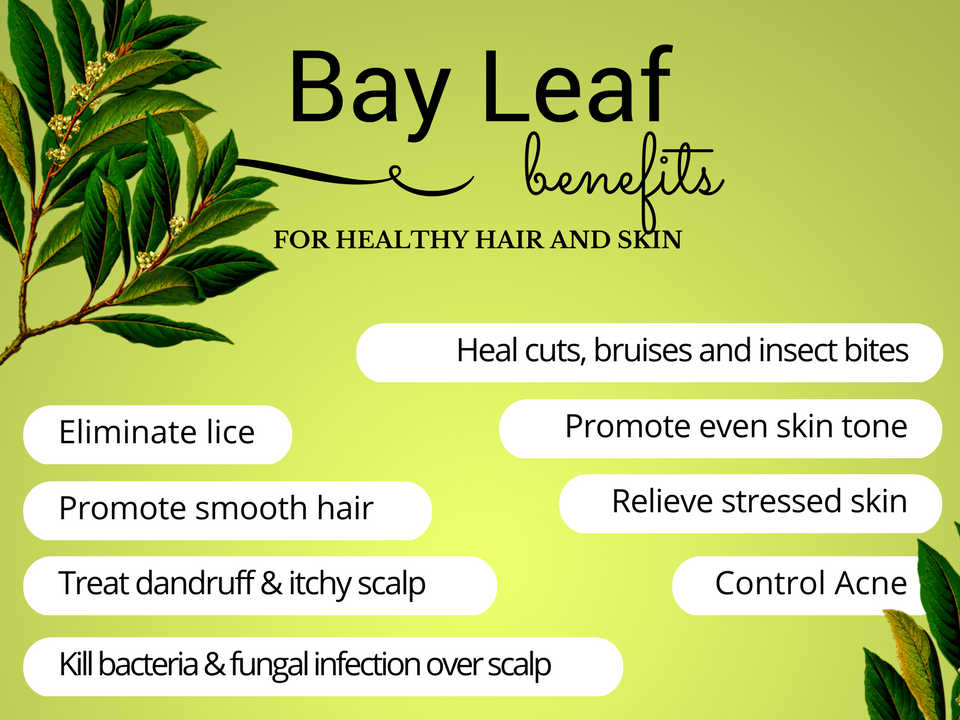UPDATED MARCH 12, 2020
When you cook following a recipe, what would you do if it calls for a particular herb or spice which you do not have? I will omit it. Especially so when the recipe calls for a teeny-weeny amount. In my case, it was ONE piece of bay leaf. This was many years ago. Now, my advice to you is NOT to omit this superb piece of leaf. Even though it is just one piece. You must be wanting to know – what is the purpose of bay leaf and how does 1 bay leaf in a recipe affect the outcome of a dish? Follow me and I will tell you…
First of all,
What is Bay Leaf
These are aromatic leaves from an evergreen, upright bay tree. The leaves are robust, with a woody, sharp flavour and a pleasant, slightly minty aroma. There are several varieties of the plant, its leaves are used in cooking.
The common ones being:
 Bay Laurel (Laurus Nobilis Lauraceae), also known as Mediterranean bay leaves. Its leaf can be used either fresh or dried to flavour soups, stews and braises in Mediterranean cuisine.
Bay Laurel (Laurus Nobilis Lauraceae), also known as Mediterranean bay leaves. Its leaf can be used either fresh or dried to flavour soups, stews and braises in Mediterranean cuisine.- California Bay Leaf (Umbellularia Californica), also known as California Laurel, Pepperwood and Oregon Myrtle. This is similar to bay laurel but its flavour is stronger. Its leave has a smooth edge, whereas bay laurel has a wavy edge.
- Indian Bay Leaf (Cinnamomum Tamala, Lauraceae). Similar in appearance to bay laurel but the leaf has three veins and its taste and the woodsy scent similar to cinnamon bark but

Indian Bay Leaves milder. It is always added in dried form while tempering the oil, before adding the main ingredients.
Indian bay leaves are actually from cassia plant and gastronomes often wonder why they are grouped under the bay leaf.
- Indonesian Bay Leaf (Syzgium Polyanthum, Myrtaceae), or known as Daun Salam, is native to Indonesia. The leaves can be used fresh or dried, mostly for meats and less often for vegetables.
- West Indian Bay Leaf (Pimenta Racemosa), is more aromatic than other types of bay leaves. It is mostly used in Caribbean cooking, from meat stews and vegetables to simple white rice.
Here is the main question.
What is the purpose of bay leaf
Like any other herbs and spices, bay leaves add a distinctive flavour and fragrance to any dish. They have been used for centuries as a flavouring, with the ancient Greeks using them in their food.
The difference between bay leaves and any other herbs is that herbs used in cooking are mostly consumed but bay leaves are removed from the pot before serving. Why so? You will find out in the later part of this article.
Once you find out what bay leaves taste like, you will know the purpose of using it.
An easy method to find out:
Put a few leaves in a pot of water and let it simmer. After five minutes, the scent of menthol and eucalyptus will emerge.
Continue to simmer for about an hour, as though making a stew, the aroma and flavour will change. The menthol scent will reduce, while a more complex aroma will surface. These are the background flavours that anyone would look for in a good pot of soup, stew or sauce. Its woodsy tang and slight bitterness help to balance the tastes of a dish.
Personally, I find the flavour of bay leaves shines more in the soup, especially clear soup compared to stews or sauces as the later is more complexed. However, it still makes a difference.
Why is the spaghetti bolognese tastier at the restaurant? You might be missing the bay leaf when cooking at home! The bay leaf blends in harmoniously with other ingredients to provide the well-rounded flavour.
Now you know its purpose – do not omit the bay leaf when it shows in the recipe.
If you have some bay leaves still hiding in your kitchen cabinet, find out
How to use bay leaves
They are typically used to season dishes that require a longer cooking time such as braises, soups and stews. However, they can also enhance the flavour of dishes like pasta sauce and risotto that require only a short cooking period. The vital part is to have a bit of liquid for the bay leaves to infuse in order to get the process going.
Here are some of the ways to use bay leaves in cooking, even though the recipes you are following did not call for it.
Stews – Beef, pork, poultry or vegetables
- Add at the beginning of cooking
- A longer simmer will add depth to the dish
Braises – Beef, pork, poultry or fish
- Add with the liquid (water or stock) when cooking
- Add when tempering the oil, before adding the main ingredient
Know where your food comes from – get your meat supply from the farm directly.
Soups or Stocks
- Add at the beginning
- Use the stocks for making sauces – excellent for anything tomato-based
Baked or mashed potatoes
- Cut potato into half → put a bay leaf in between → reassemble, wrap in foil and bake
- Add into boiling water when cooking the potatoes
Use Fresh Bay Leaves or Dried
The fresh leaves can impart a slightly bitter flavour in a dish when used in cooking. You may have to remove the leaves earlier when using fresh.
The dried takes several weeks after picking and drying to develop its full flavour. They impart a more refined flavour and are normally left in a dish as it cooks then removed before serving.
Click here to read more about Fresh Herbs vs Dried.
How to Store Bay Leaves
 All freshly dried herbs remain fresh for up to 6 months when stored in an airtight container, placed in a cool, dry place.
All freshly dried herbs remain fresh for up to 6 months when stored in an airtight container, placed in a cool, dry place.
It is good to know that dried bay leaves can last even longer when stored in the freezer. But then, you don’t need to store any longer if you use them constantly as suggested above. I am sure you will do so knowing the benefits of bay leaves.
What are the Benefits of Bay Leaves
The leaves of Bay Laurel (Laurus nobilis) tree, also known as Sweet Laurel, have been used medicinally since the ancient times to treat illness related to liver, stomach and kidney. Nowadays, herbalists use bay leaves for treating various health issues that include:
Diabetes
Type II diabetes patients have difficulty metabolizing glucose and bay leaves can help improve insulin function significantly to regulate glucose.
Digestion
Bay leaves contain enzymes that break down proteins and promote healthy digestion. They reduce flatulence and also relieve common digestive disorders such as constipation, acid reflux and irregular bowel movements.
Heart Attacks and Strokes
Phytonutrients found in bay leaf improves heart function and provide protection against heart attacks, strokes and other common heart complications.
Besides, compound rutin in the leaf helps to fortify the walls of the capillaries. While another compound, the caffeic acid helps to remove bad cholesterol from the body. These help in keeping the heart healthy.
Cancer
Caffeic acid, quercetin, eugenol and catechins in bay leaf have chemoprotective properties. These provide resistance against different types of cancer.
Free radicals are responsible for transforming healthy cells into cancerous cells. Bay leaves are a rich source of antioxidants and phytonutrients. Thus, help eliminate free radicals and protect the body against cancer.
Infection, Cold and Pain
Eugenol in bay leaf oil has antibacterial and anti-fungal properties, making it perfect for curing infections. It is useful in treating flu and cold.
Also, its anti-inflammatory properties can ease the pain of strains, sprains and joint, as well as other common aches.
Insomnia
Bay leaves have a calming effect on the mind. Its mild sedative properties help induce sleep. Therefore, they can be used in treating insomnia.
Other Benefits – External Uses
Packed with essential vitamins, minerals and antioxidants, bay leaves can promote healthy hair and skin. Learn how to make simple homemade natural remedies for skin care and hair.
Can Bay Leaves be Eaten
Technically, yes.
But you should NOT. They are sharp-tasting and bitter. Also because they are very tough and hard to digest. On top of that, they could scratch the digestive tract or cause choking.
Always remember to remove the leaves from the dish before serving.
Some leaves similar to bay leaves from the mountain and cherry laurel are known to be poisonous. Thus, some people consider all bay leaves are poisonous. Not so. Bay leaves sold for culinary purposes are not poisonous and perfectly safe for cooking.
in Conclusion
Nowadays, as I continue learning herbs and spices and their uses, I know their purpose in a particular dish and will not purposely omit them. Believe me, a pinch of herb or spice does enhance the flavour of any dish. One bay leaf does make a difference. Once you recognized the taste, you can tell easily if the bay leaf is being used in a dish.
Furthermore, there are many uses for bay leaves and beneficial for health. Don’t neglect it when a recipe calls for one small piece of bay leaf. I will definitely use it where and when possible. Will you?
Run out of bay leaves? No worries, you can always buy online on Amazon. Alternatively, buy direct from Starwest Botanicals.
Before I leave, one last tip for you.
You can use bay leaves as insect repellent too. The lauric acid in the leaves has insect repellent properties. A dish of bay leaves can ward off insects. This calls for another article on another day.
If you know of any other uses for bay leaves or any good recipes using them, please share with us at the comments section below. Together, we can better our home cooking with herbs and spices. Additionally, knowing more ways to utilize them – waste not.
Share the article
If you find this blog post interesting, please share it with anyone that you think might find it useful. Thank you and have a good day!
From the Corner of My Home – Spice Up Your Life with Herbs and Spices
Disclosure: This article may contain affiliate links as part of the Amazon Services LLC Associate program and other affiliate services. This means that cornerofmyhome.com receives a small commission by linking to Amazon.com and other sites at no cost to the readers.


 Bay Laurel (Laurus Nobilis Lauraceae), also known as Mediterranean bay leaves. Its leaf can be used either fresh or dried to flavour soups, stews and braises in Mediterranean cuisine.
Bay Laurel (Laurus Nobilis Lauraceae), also known as Mediterranean bay leaves. Its leaf can be used either fresh or dried to flavour soups, stews and braises in Mediterranean cuisine.



I do cook regularly for my kid. I’m not sure if I heard of bay leave but is it the one that you found in Thai Tomyam? Or maybe I’m mistaken. I’m no expert in herbs and spices but it seems this could go well with potatoes, one of my favourite food. Thanks for sharing this valuable information.
Hi Kenny,
Thanks for visiting my site and found it informative.
The leaves found in Thai Tomyam are kaffir leaves. They give the soup its citrusy taste. Also an aromatic leaf but totally different in taste. Another similarity is that only 1 or 2 kaffir leaves are needed. Else, the dish will turn bitter.
So happy to know that you cook regularly for your kids.
Happy Cooking
Sharon
Great and very thorough article! I never knew so much about bay leaves and its usage. I am always curious about what I can use when making dishes, especially because I don’t eat meat so I eat potatoes, grains, and legumes. It’s nice to know what herbs I can use to make this dishes more interesting and yummy.
Next time I cook a potato, I will try adding a bay leaf and see how it tastes. Thanks so much for posting this article!
Thank you Lidia. Am glad that you found this article informative.
Hope you love the potatoes. Unfortunately, my kids did not like them. Especially my daughter who has a strong taste bud. She knew something was “wrong” with the taste. Hope their palate will change as they grow.
Always happy to share
Sharon
Sharon,
I really like this post as I am looking to be more adventurous in my cooking and love finding new recipes. Your site is great and I loved learning in this post about the different types of bay leaves and which recipes I can use it in so thanks for that.
Fran
Hi Fran,
You are most welcome and thank you for your lovely comments.
Happy Cooking!
Sharon
Hey Sharon,
let me start by saying that I LOVED YOUR LOGO. It’s so beautiful and cute. *grins*
Coming to the post, OMG, I never knew about any of the benefits of bay leaves before reading your post. I always used to wonder that why on earth people would put leaves in dishes, I mean they’re like tasteless.
But I must say that your post has provided me with some deep insights. I also was oblivious to the types of bay leaves. I only knew about Indian Bay Leaves until now.
Thanks a lot for making this post so informative and full of value.
Thank you so much for your lovely and positive comments. The question “Why” often keeps me searching for answers. It feels great to know that I am able to provide valuable information.
Will keep sharing.
Bay leaves are wonderful t use in cultural dishes. I’m from Trinidad and we consistently use this leaf in a lot of out recipes. I love cooking it with callaloo and letting it simmer down. The smell just fills the air. However, I never really thought about the health benefits of the leaves. You get so used to eating it that you never really think about it lol!
Hi Liz,
Thank you for visiting my site. There are many other herbs and spices that benefit our health too, without us knowing. I will continue to share them here as I go along.
Cheers,
Sharon
Hi Sharon
Sometimes I try to help my wife to cook. Herbs and spices are quite important additive to the taste of any dish. Growing up with Eastern Europe cuisine most of the time we were using Bay Laurel leaves. It is great to know that there are so many alternatives to the one.
But what surprised me a lot that bay leaves can be
beneficial to our health!
Thank you for the info.
Cheers,
Vitaliy
Hi Vitaliy,
You ‘re most welcome. It is good to share.
There are many health benefits to herbs and spices that we are not aware of. Do drop by my site every now and then for more info.
Cheers,
Sharon
Thank you for a great explanation of Bay Leaves. My wife is from Panama and I am from the USA and we both have used bay leaves in our cooking as long as we can remember. We also use them exactly as you advise in slow cooked in stews, soups and salsas We both learned basic cooking from our mothers and neither one of us knew what the exact flavor Bay adds, we just knew Mama added them to stews and soups. We followed your advice and made a tea steeped for 1 hour and wow, that flavor is unmistakable, yet I can see how it blends into complex slow cooked meat dishes. I plan on using one on a potato as you suggest too. A great article the developed our understanding of a flavor we have been cooking with all of our adult lives.
Hi Robert,
Yes, most of us learn how to cook from our mom, if not from the recipe books. Those were the days.
It is good to know how each ingredient work in a dish. The understanding can help us develop our own recipes.
Learning and sharing here is the way to go…
Happy Cooking!
Sharon
Thanks for sharing all that great information about herbs and spices! I read about some new leaf spices that I was not aware of. I will use some of these the next time I cook!
Christina
P.s I love the layout of your site and your top logo it looks very organized.
Hi Christina,
Thank you for your positive comments. Do come back in the near future for more sharing.
Happy cooking,
Sharon
Hi Sharon,
Thank you for writing this article. I didn’t realise how wonderful the “humble bay leaf” was until reading this.
Yes, I often omit bay leaves from dishes if I don’t have them on hand. Also, I purchased a packet of dried bay leaves many years ago and I am still using them. why? because the packet says it has a long use by date. I can see from you advice that a few months is best.
Thank you for writing this article.
Thanks for dropping by. Am glad this article provided you with useful information. It is time to buy a new packet of bay leaves! Don’t omit it from the dishes as it really makes a difference.
Good Day!
I remember when i was growing up as a kid, i would always complain about mom leaving dry leaves in the food. I didn’t know the health benefit and i didn’t even see the use for it. i was always pissed. But the first time i ate a meal outside without bay-leaf, I almost threw up, the meal was just in-complete. I became more addicted when i learnt about the chemo-protective properties.
Looks like mom knows best when it comes to cooking. Many people don’t know the benefits of bay leaf, myself included until I wrote this article. Hope people will come to know about it through my sharing.
Thanks for dropping by and commenting John.
Good day!
Hello Sharon,
Who knew there were so many types of bay leaves and it was so unbelievably medicinal?
I have so noticed that when I make soups without bay leaves the difference is quite obvious.
I am certainly now after reading this article going to be far more proactive in using bay leaves.
Amazing as always Sharon!
In peace and gratitude, ariel
Thank you for being an amazing supporter of Corner of My Home. Always delighted to see you here, Ariel.
So you noticed the difference. Don’t skip the bay leaves!
Have a good day!
Sharon
Hi Sharon,
I grew up in a family and tradition of always using Bay leaves, bay laurel specifically. It was a funny saying that if you found a bay leaf on your plate at meal time you would have good luck. Of course, it was meant to be removed so that happened rarely. As I got older and started making my own dishes, especially tomato sauce, I quickly noticed a difference without it. I never forget it now. It is nice to know it carries so many medicinal uses as well!
I never knew why you had to remove it. I thought it was just because it was large and unappealing. I am glad it is not toxic (the ones you cook with) but good to know that it is best not to eat it.
I learned a lot more about Bay leaves form your article. I appreciate this wonderful insight as always!
Thanks for your lovely comments, Christina. Always happy to have you around.
Honestly and personally, I don’t remove the bay leaves. I just tell my kids not to eat those. Let’s see who the lucky one is! 🙂
Have a nice day and see you again!
Sharon
This post is extremely interesting and helpful for me, I am a single guy who loves to cook his own meals with herbs and spices. Thanks to your post I have fell in love with bay leaf and I can’t wait to try it, I live with chronic pain as well and I noticed in your post bay leaf is good for pain.
Thank You
Jeff
Hi Jeff,
I am glad you find this article interesting and helpful. Sorry to hear about your chronic pain though.
Bay leaves can help to soothe body aches. Simply add 4-5 bay leaves into 1 litre of boiling water. After which, add the decoction to your bathwater to relieve sore muscles and rejuvenate the body.
To ease joint pain, you may rub bay leaf oil on inflamed joints to reduce the pain.
I hope these can help you to ease your chronic pain. Let me know if you need further help.
All the best and take care,
Sharon